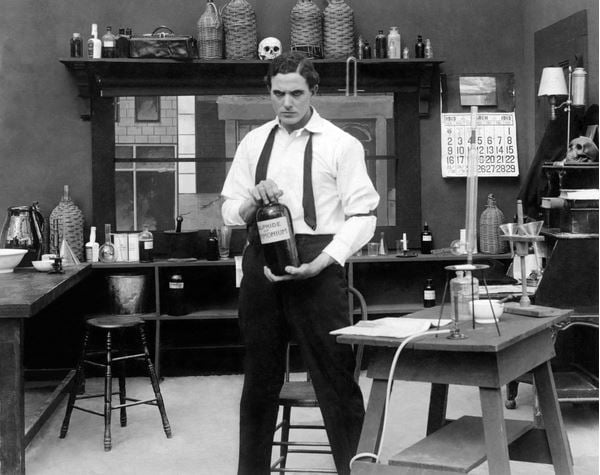
Mary Shelley’s Frankenstein Is 200 Years Old
“I saw the pale student of unhallowed arts kneeling beside the thing he had put together. I saw the hideous phantasm of a man stretched out, and then, on the working of some powerful engine, show signs of life, and stir with an uneasy, half vital motion. Frightful must it be; for supremely frightful would be the effect of any human endeavour to mock the stupendous mechanism of the Creator of the world”.
Mary Shelley describing her “waking dream” which inspired the story in the introduction to the 1831 edition of Frankenstein
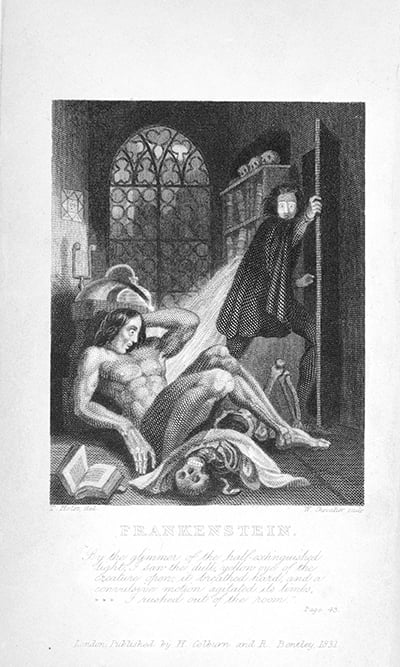
Frankenstein. ‘By the glimmer of the half-extinguished light, I saw the dull yellow eye of the creature open: it breathed hard and a convulsive motion agitated its limbs. I rushed out of the room’. / British Library, London, UK / © British Library Board. All Rights Reserved / Bridgeman Images
On the 1st January 1918, Mary Shelley‘s masterpiece Frankenstein (also called The Modern Prometheus) was published. Shelley started to write the novel when she was just 18, and the 1st edition was published anonymously 2 years later.
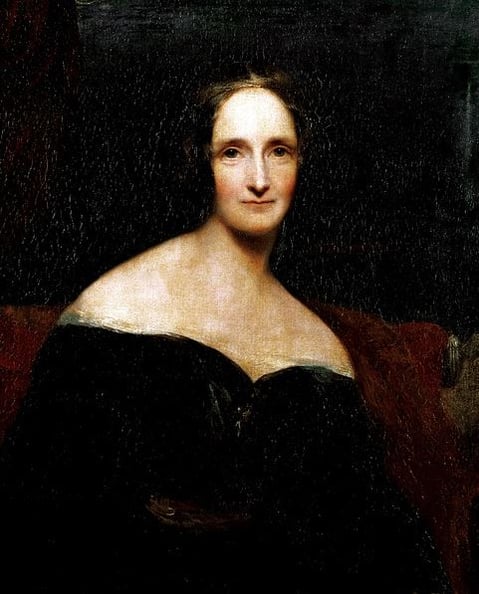
Mary Wollstonecraft Shelley (1797-1851) (engraving), Rothwell, Richard (1800-68) (after) / Private Collection / Photo © Ken Welsh / Bridgeman Images
Frankenstein was first conceived when Mary Shelley was staying with her then lover and future husband Percy Bysshe Shelley at Villa Diodati, the house of Lord Byron by Lake Geneva in Switzerland. The three decided to have a competition among themselves to see who could write the best ghost story. The result of this competition was to be Shelley’s defining masterpiece.
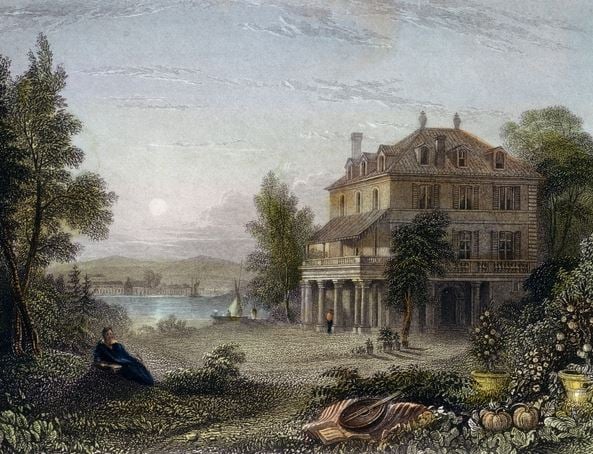
Villa Diodati, near Geneva, where Lord Byron, Mary Shelley, Percy Shelley and John Polidori stayed in 1816 creating literary characters of Dracula and Frankenstein, engraving by William Purser / Bibliotheque des Arts Decoratifs, Paris, France / De Agostini Picture Library / G. Dagli Orti / Bridgeman Images
Frankenstein is infused with elements of the Gothic novel and the Romantic movement. At the same time, it is an early example of science fiction. It has had a considerable influence in literature and popular culture and spawned a complete genre of horror stories, films and plays.
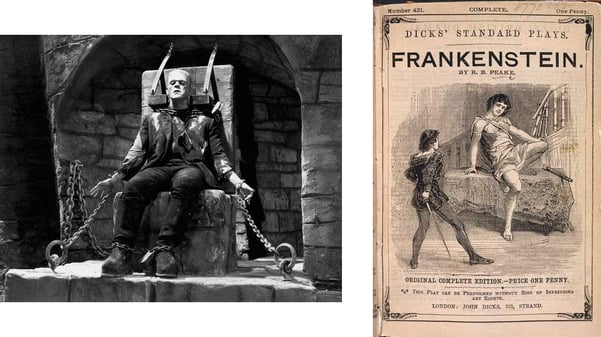
Left: Frankenstein THE BRIDE OF FRANKENSTEIN by James Whale with Boris Karloff, 1935 (b/w photo) / Photo © DILTZ / Bridgeman Images. Right: Advertisement for the play, ‘Presumption; or The Fate of Frankenstein’ by Richard Brinsley Peake, based on the novel, ‘Frankenstein / / British Library, London, UK / © British Library Board. All Rights Reserved / Bridgeman Images
This idea of the creation of a being by someone other than God originally goes back to Greek mythology, in which the character Prometheus is credited with creating Man with a ball of clay. Shelley’s story stems from this ancient tale but through the view of a society in which science was becoming more advanced. The image of the mad scientist becoming too big for his boots resonated with people at the time.
“science has … bestowed upon man powers which may be called creative; which have enabled him to change and modify the beings around him …”
From “Elements of Chemical Philosophy” (published in 1812), by Humphry Davy
The character of the monster (often confused with the character of Dr Frankenstein, who was in fact the creator of the monster in Shelley’s novel) has embedded itself in the public psyche to this day. The theme pops up in contemporary artwork, such as Jean-Michel Basquiat’s paintings, or great science fiction films such as Ex Machina or Ridley Scott’s Prometheus.
There is no doubt that Mary Shelley’s Frankenstein is one of the classics of Western literature, not just science fiction, and has became part of the fabric or our consciousness – something Shelley could not have predicted when writing this at the age of 18 but would surely be proud of.

